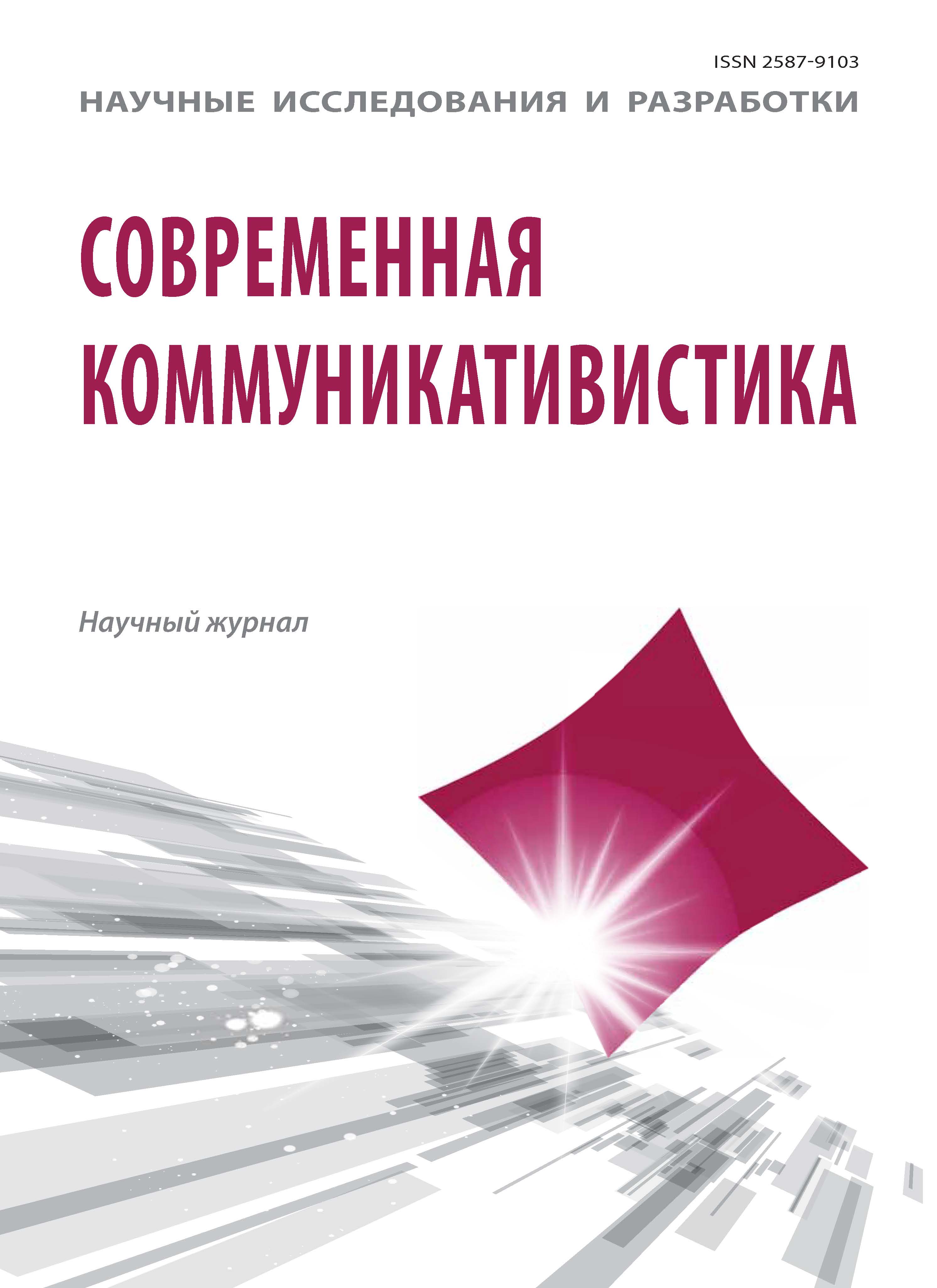Ryazan', Russian Federation
The article is devoted to such ambiguous phenomenon in linguistics as “iconicity”. The term went into use recently, in the 20th century, its emergence is connected with the names of Ch. Pearce, R.O. Jacobson, Yu.M. Lotman, J. Hyman. However, we can find attempts to define it in Plato’s and Socrates’ works. Ancient philosophers argued whether the form for contents is a natural cover or whether it is assigned to contents under an agreement. The concept “icon” is closely connected with semiotics which has now traversed to media linguistics, while some contemporary theorists of journalism consider such new tendencies as an iconomaniye and an iconofobiya. Iconicity in its various manifestations is studied by psychology and neurobiology. The article presents and analyzes a variety of definitions of the term as well as the types and principles of iconicity.
iconicity, icon, principles of an iconicity, types of an iconicity, antiiconicity, intericonicity.
Предлагаемая статья посвящена такому неоднозначному феномену в лингвистике, как «иконизм», или «иконичность». Заявленные термины вошли в научный обиход сравнительно недавно, а именно в ХХ в., и связывают их появление с именами таких исследователей, как Ч. Пирс, Р.О. Якобсон, Ю.М. Лотман, Дж. Хайман. Однако над вопросом соотношения формы и содержания в языке человек задумывался еще в глубокой античности, попытки решения данной задачи мы можем найти в трудах Платона и Сократа. Уже древние философы рассуждали о том, является ли форма для содержания естественной оболочкой или она закреплена за содержанием по соглашению, т.е. конвенциональна.
1. Brusenskaya L.A., Gavrilova G.F., Malycheva N.V. Slovar’ lingvisticheskikh terminov [Dictionary of linguistic terms]. Rostov on Don: Feniks Publ., 2005. 256 p.
2. Voloskovich A.M. Tipy ikonichnosti v tekste: instruktsii i kommentarii k proizvedeniyam zhivopisi [Types of iconicity in the text: instructions and comments to the works of art]. Vestnik MGLU [Bulletin of Moscow State Linguistic University]. 2011, I. 14, pp. 16-25.
3. Kibrik A. Ikonichnost’ [Iconicness]. 2001. Available at: http:// www.krugosvet.ru/enc/ gumanitarnye_nauki/lingvistika/ IKONICHNOST.htm
4. Pirs Ch.S. Elementy logiki. Grammatica Speculativa [Logic elements. Grammatica Speculativa]. Semiotika: Antologiya [Semiotics: Anthology]. Ekaterinburg: Delovaya kniga Publ., 2011. 702 p.
5. Attridge Derek (1988): Peculiar Language: Literature as Difference from the Renaissance to James Joyce. London: Methuen. Pp. 75-82.
6. Bolinger, Dwight L. (1965):Forms of English: Accent, Morpheme, Order. Tokyo: Hokuon. Pp. 3-35, 447-448.
7. Bußmann H. Lexikon der Sprachwissenschaft. 2.völlig neu bearbeitete Aufl.Stuttgart, 1990. - 316 S.
8. Croft W. (1995): Modern Syntactic Typology. In: Shibatani, Masayoshi / Bynon, Theodora (eds.): Approaches to Language Typology. Oxford: Clarendon Press. S. 85-144.
9. De Cuypere L. (2008): Limiting the Iconic. From the metatheoretical foundations to the creative possibilities of iconity in language. Amsterdam/Philadelphia: J. Benjamins. 286 pp.34
10. Dressler W.U. (2005):Word-formation in natural morphology. In: Štekauer Pavol / Lieber, Rochelle (Hrsg.): Handbuch of Word-Formation. Dordrecht: Springer. 298 S.
11. Haiman J. (1980):The iconicity of grammar: isomorphism and motivation. Language 56 (3), pp. 515-540.
12. Haiman J. Natural Syntax: Iconicity and Erosion. Cambridge: CUP, 1985. Pp. 515-540.
13. Householder F.W. (1946): On the problem of sound and meaning, an English phonestheme. Word 2, pp. 83-84.
14. Köhler W. (1947): Gestalt Psychology: An Introduction to New Concepts in Modern Psychology. New YorkNY: New American Library, Mentor. 222 pp.
15. Lewandowski Th.(1985): Linguistisches Wörterbuch. Neue bearbeitete Auflage. Heidelberg-Wiesbaden: Quelle & Meyer. S. 251-281.
16. Masuda K. (2002):A Phonetic Study of Sound Symbolism. PhD dissertation. University of Cambridge. Pp. 46.
17. Nänny M., Fischer O. Form Miming Meaning. - Amsterdam: John Benjamins, 1999. - 443 pp.
18. Pörings R., Schmitz U. (2003): Sprache und Sprachwissenschaft: eine kognitiv orientierte Einführung. Tübingen: Narr. 281 S.
19. Pusch C.D. (2001 / online 2008): Ikonizität. In: HSK 20, 369- 384. [http://www.romanistik.uni-freiburg.de/pusch/Download/ ikonizitaet.pdf, 1-18].
20. Römer Ch. (2006):Ikonische Kodierung bei der Phraseologisierung von Verbphrasen. www.personal.uni-jena.de/~xcr/v2/Dateien/ File/.../aufsatz.pdf.
21. Sapir E. (1929): A study in phonetic symbolism. In: Journal of Experimental Psychology, 12, pp. 225-239.
22. Tabakowska E., Ljundberg Ch., Fischer O. Insistent Images. Amsterdam: John Benjamins, 2005. Pp. 209-225.







